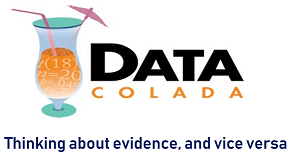Kahneman and Tversky’s (1979) “Prospect Theory” article is the most cited paper in the history of economics, and it won Kahneman the Nobel Prize in 2002. Among other things, it predicts that people are risk seeking for unlikely gains (e.g., they pay more than $1 for a 1% chance of $100) but risk averse for…
Category: About Research Design
[51] Greg vs. Jamal: Why Didn’t Bertrand and Mullainathan (2004) Replicate?
Bertrand & Mullainathan (2004, .htm) is one of the best known and most cited American Economic Review (AER) papers [1]. It reports a field experiment in which resumes given typically Black names (e.g., Jamal and Lakisha) received fewer callbacks than those given typically White names (e.g., Greg and Emily). This finding is interpreted as evidence of racial discrimination…
[46] Controlling the Weather
Behavioral scientists have put forth evidence that the weather affects all sorts of things, including the stock market, restaurant tips, car purchases, product returns, art prices, and college admissions. It is not easy to properly study the effects of weather on human behavior. This is because weather is (obviously) seasonal, as is much of what…
[36] How to Study Discrimination (or Anything) With Names; If You Must
Consider these paraphrased famous findings: “Because his name resembles ‘dentist,’ Dennis became one” (JPSP, .pdf) “Because the applicant was black (named Jamal instead of Greg) he was not interviewed” (AER, .pdf) “Because the applicant was female (named Jennifer instead of John), she got a lower offer” (PNAS, .pdf) Everything that matters (income, age, location, religion) correlates with…
[31] Women are taller than men: Misusing Occam’s Razor to lobotomize discussions of alternative explanations
Most scientific studies document a pattern for which the authors provide an explanation. The job of readers and reviewers is to examine whether that pattern is better explained by alternative explanations. When alternative explanations are offered, it is common for authors to acknowledge that although, yes, each study has potential confounds, no single alternative explanation…
